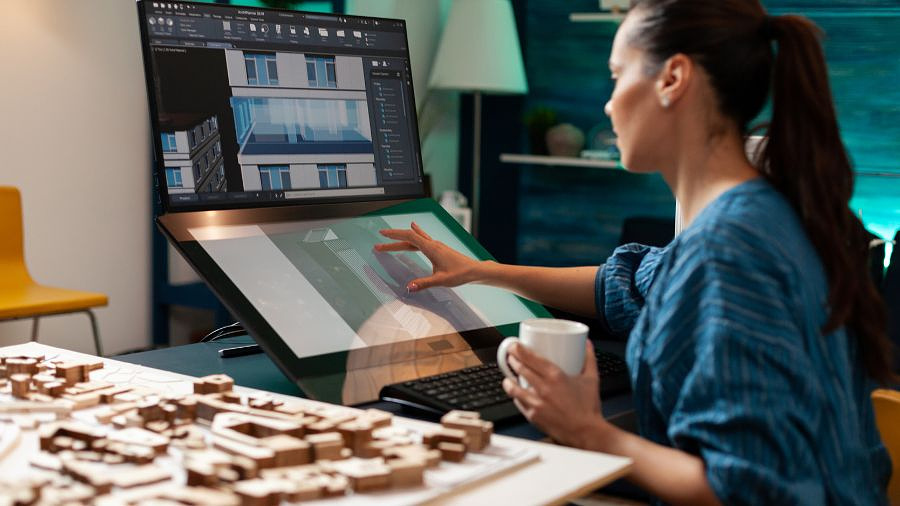
Industry News
Impact of sustainable building design in green architecture globally
Sustainable building practices include incorporating an ecosystem-based approach into the process of design, construction, and operation. According to the United States Green Building Council, this approach treats the building as a cog in a larger system, taking into consideration its users, the surrounding environment, and ecosystems. Such integrated design processes include a variety of stakeholders, including the building owner, tenants, and other building users. Here are three ways to incorporate a sustainable design approach into your construction process.
A building may incorporate passive solar design strategies to cut down on cooling and heating costs, and natural daylight design to increase productivity. Sustainable building techniques include energy-efficient lighting, low-flow plumbing fixtures, and renewable energy sources. During the heating season, the south face should receive sunlight between 9:00 A.M. and 3:00 P.M. During the summer, this strategy may be ineffective because of the lack of natural light. However, it can have other benefits, including reducing water use.
A green roof does not necessarily mean having a green wall or vertical garden, although the Italian architect Renzo Piano included recycled blue jeans as insulation for his experimental home. However, the concept of a green building is becoming more mainstream and has a range of definitions. The term has also spawned other terms such as eco-architecture and organic design. In addition to the green building concept, a related concept is eco-tourism.
The benefits of a green building are many. Aside from reducing greenhouse gas emissions, it improves indoor air quality, reduces water and energy consumption, and reduces waste in landfills. Furthermore, a green building also tends to be more energy-efficient than a conventionally designed building, which can save a building owner a lot of money. While green building design may be more expensive than conventional architecture, it will pay off over time.
Achieving green buildings requires a comprehensive approach that involves addressing all aspects of the project, from design to construction. The most important aspect of a sustainable building is its occupants. People will feel more comfortable and productive if they live in a greener building. A sustainable architecture design also reduces waste and enables occupant satisfaction. By following these guidelines, your building will be energy-efficient and environmentally sustainable. However, if you are considering green building design, it may be better to seek the advice of a specialized firm that specializes in this field.
The concept of green architecture is growing in popularity as a method of design and construction. A green architect will consider the impact of their construction on the natural environment and those residing in it. They will look for opportunities to reduce their impact on the environment and minimize their negative impact on humans. A green building will also reduce the amount of waste created, which is essential for preserving natural resources and protecting the air supply. There are many benefits of green design, and you may not even know about them.
The process of green building design is complex and involves many stakeholders. The process begins with an analysis of the building's physical characteristics. Then, the design process begins. The overall impact of the project is assessed using an ecosystem-based approach to design. The process of design, construction, and operations is incorporated into this framework. In other words, there is no one green building without the other. So how can green design work for you? You need to consider the effects of each individual participant.
Why sustainable design is better?
Sustainability is an important aspect of architecture. In the case of buildings, sustainable architecture means minimizing their impact on the environment. It incorporates several aspects of building design, such as sustainable building materials, the use of renewable energy sources, and the integration of the built environment into the natural surroundings with landscape design services. It has become increasingly popular in recent years, as people become more aware of the environmental and social issues associated with global warming. Read on to learn more about the benefits of green architecture and how it can help you build a sustainable future.
A building that is designed with sustainable materials has fewer emissions and is more energy-efficient than one made of conventional materials. Many commonly used building materials are not sustainable, because they cannot be reused after their lifecycle. By contrast, buildings made from sustainable materials are more energy-efficient and less energy-hungry. When you think of sustainable architecture, you probably picture a simple green building. But the practice of sustainable architecture can be applied at every level of design.
Green buildings minimize the negative impacts of construction and human intervention on the environment. Energy is a major factor in global warming, and sustainable buildings are designed to make the best use of natural resources. Sustainable buildings are also energy-efficient. Modern building materials and techniques require enormous amounts of energy. Architects can make buildings as energy-efficient as possible by considering these principles. By integrating green technologies into their design, they can maximize the utilization of local environmental resources.
As buildings contribute almost half of the CO2 emissions, they must be built to be environmentally friendly. EIA (U.S. Energy Information Administration) reports that sustainable buildings are widely used in countries all over the world. A study by MIT found that sustainability in buildings is standard practice in many nations. These buildings are built with energy efficiency in mind, as well as aesthetic and indoor environmental quality. Those factors make sustainability a better choice for any building.
Using recycled and recyclable materials is an important element of sustainable architecture. Traditionally, building materials are discarded into landfills, which increases the waste in our environment. However, sustainable construction methods make it possible to reuse building waste, such as concrete, steel, and other building materials. Building materials such as these are often available in recycled forms, depending on their condition and reusability. The architect will determine which materials can be used.
Moreover, sustainable architecture has many advantages, too. For instance, a waste-to-energy power plant in Copenhagen, Denmark, bills itself as the cleanest in the world. Its unique design includes a facade built for climbing, a roof that you can hike on, and an actual ski slope! This building, in fact, is a beacon of sustainable architecture. The company has also designed the newest addition to the Harvard campus, the Library Services Building, which became the first LEED Gold-certified building on campus.
Advantages of Sustainable Architecture Design
The benefits of green architecture are numerous, not the least of which is its ability to reduce environmental impact with infrastructure design services. Aside from reducing the amount of material used for construction, green buildings can also increase people's quality of life by preserving fuel resources and minimizing pollution. By using energy-efficient lighting, heating, cooling, and ventilation systems, green buildings can also help reduce urbanization’s effects on the environment. And with these benefits comes a lowered cost of construction and maintenance.
While many architects think of sustainable architecture as expensive, it's a reality that it's worth the investment. After all, sustainable materials are more expensive than traditional resources. This is why it is so important to involve professionals with expertise in this area. In addition to offering proven solutions, a sustainable design team can help a client find the best and most affordable way to build their project. Whether it's a small apartment complex or a sprawling office building, sustainable architecture is an excellent choice for any project.
According to the United Nations Environment Group (UN Environment), building and construction account for over 40% of global energy use and emissions. Today, no building can be considered completely autonomous. Its design, construction, and materials are all intrinsically linked. In addition to being functional, sustainable buildings also need to be aesthetically superior and offer long-term energy efficiency. And with the growing concern over the environment, there is a growing movement to promote sustainable architecture.
The benefits of sustainable buildings are numerous. Sustainable buildings help preserve natural resources and minimize their negative effects on the climate and environment. Green buildings also use renewable energy sources efficiently, and they are also better for occupants' health and comfort. They also minimize energy and lighting use, reducing their carbon footprint. These buildings are the future of the building industry. By following these guidelines, you can build a building with zero carbon emissions. The advantages of sustainable buildings can make a big difference in your community.
You must be logged in to post a comment. Login here.
About this article
The benefits of sustainable buildings are numerous. Sustainable buildings help preserve natural resources and minimize their negative effects on the climate and environment. Green buildings also use renewable energy sources efficiently, and they are also better for occupants health and comfort.
visibility189
favorite_border0
mode_comment0




